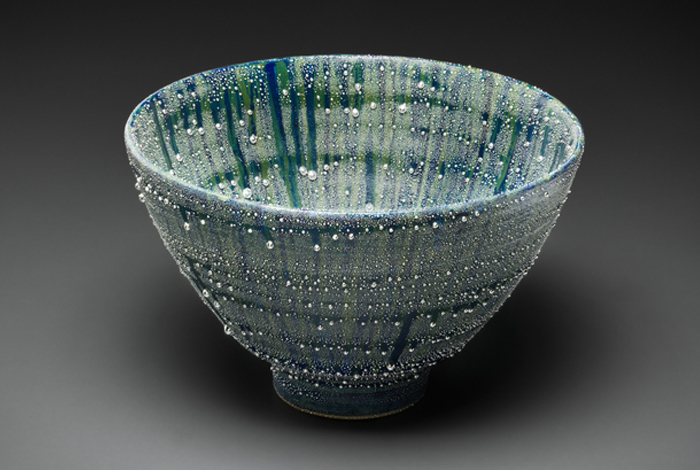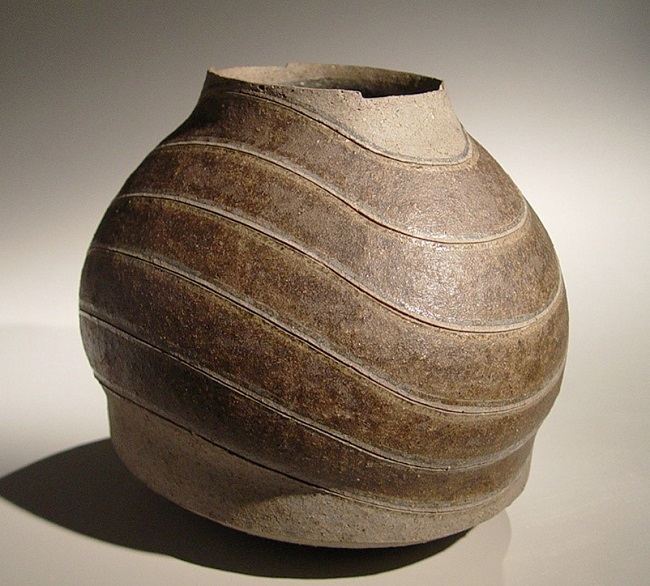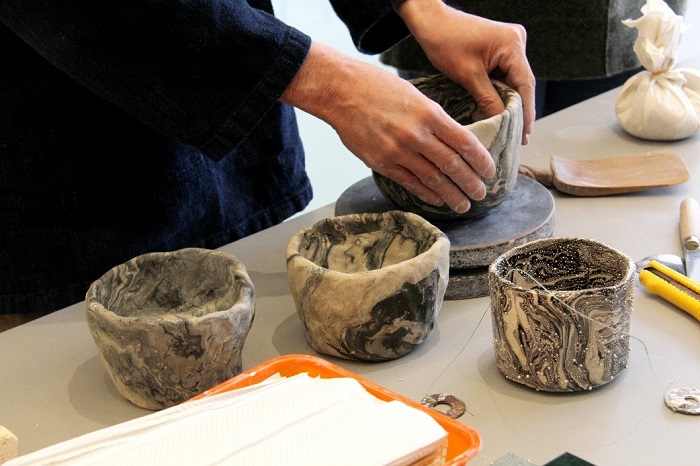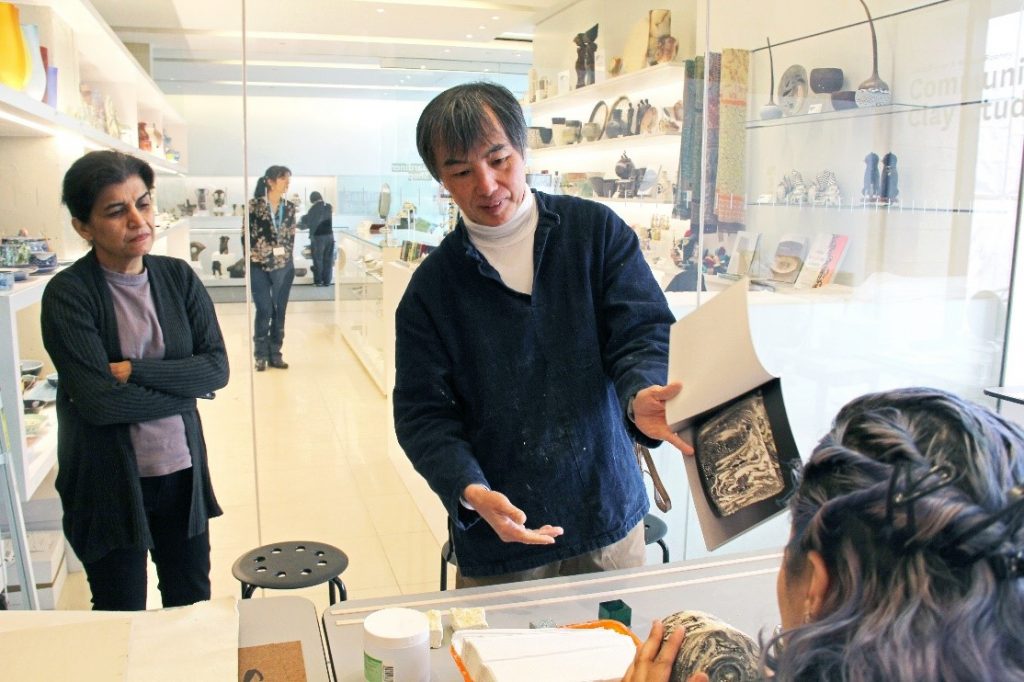In the studio with Takahiro KONDO
This week, we welcomed our inaugural Artist in Residence, renowned Japanese ceramic artist Takahiro KONDO. Born in Kyoto into a family of ceramic artists celebrated for their traditional sometsuke (cobalt blue-and-white porcelain), KONDO took an interesting path to becoming an artist—his first passion was table tennis, and he eventually became Japan’s top ranked competitive table tennis player before turning to ceramics in his twenties.
KONDO has since successfully carved out an independent artistic identity rooted in experimentation, which he will be demonstrating throughout his residency at the Gardiner. We sat down with KONDO during his open studio time to learn more about the artist’s remarkable career, and to get some insight into his artistic practice.
You were a competitive table tennis champion before you turned to clay in your twenties—what made you decide to make that career change?
I started playing table tennis at a young age, and eventually became the number one player in Kyoto, and then Japan, when I was in university. I continued to play table tennis after I graduated, since the company I was working for had a table. I was a businessman in the daytime, and played table tennis at night. I didn’t think I was a very talented businessman though, and knew I couldn’t continue playing table tennis into my old age. At the time, my uncle, who was a ceramic artist, was struggling with his artistic style and committed suicide. The death of my uncle made me think of the profoundness of ceramics, and I became interested in knowing more about my family’s history with the material. I went back to Kyoto, the city in which I was born, when I was 26, and started going to school to learn about wheel throwing and glazing. Until the age of 26, I had no interest in art.
Water is a recurring theme in your work. What about it appeals to you, and what is its connection with clay?

After graduating from university, I was an assistant for my father, also a ceramic artist, for three years. After learning traditional techniques from my father, I thought I needed something unique about my practice that related to me. Something that came to mind was the city of Kyoto—Kyoto is a very old city, as you may know, and has a history of 102,000 years. In Kyoto, there’s a mix of very old temples and shrines, as well as very contemporary buildings which I don’t find very beautiful. Other than the buildings, traditional tea ceremonies and other kinds of Japanese traditions and contemporary culture are all mixed up in the city. Looking at Kyoto, I came up with the idea of mixing things with contrasting, or ambivalent, qualities. The two most important elements in ceramics are clay and fire. What contrasts with fire is water, so my idea was to use clay as a medium to connect fire and water, two very contrasting elements.
Who is a Japanese ceramic artist that Canadians should know about?

My favourite ceramic artist is Kamota Shoji. He was active from after the Second World War to the 20th century.
What will you be working on during your time at the Gardiner?

The main goal for me during my stay is to demonstrate my techniques to the public and artists here in Toronto, so I’m not working on anything in particular. I’m trying to use this new clay—it’s my first time using Canadian clay, and the equipment here is very different from what I use in Japan, so I’m trying to experiment with new things. Although I don’t have time to make any substantial work during my stay, I’m thinking of using this as an opportunity to explore the process of creating and decaying. A new theme I’m currently working on is exploring the controllable and the uncontrollable—I can control in a way how I create with the clay, but on the other hand, there is something that I can’t control. Even if I create something, it will eventually decay or be destroyed. During my second public Master Potter workshop on Monday, I’m planning on showing my experiment with destruction and how it can be connected to the beauty of the art. It’ll be a performance-based project.
You’ve been in Toronto for almost a week now. What’s your favourite thing about the city so far?

I like that everything is in walking distance. I feel like everyone is so kind and diverse. I also want to find good food—I’m still looking!
Takahiro KONDO is taking up residency in the Community Clay Studio until March 31. Reserve your spot for his final Master Potter workshop on Monday, March 26 to learn some of KONDO’s incredible clay techniques, and drop by the Community Clay Studio during his open studio times to see him in action.